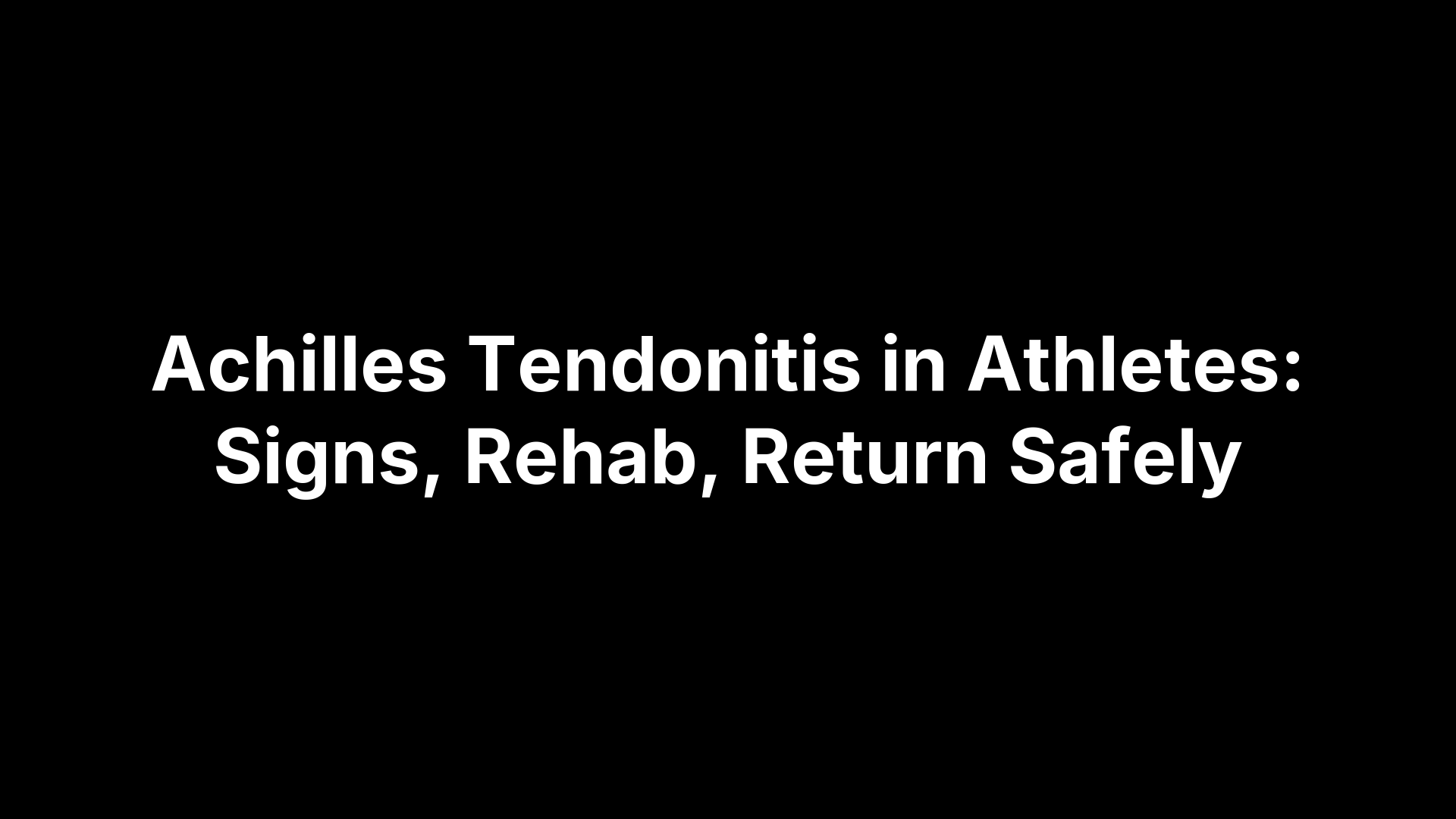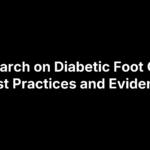That nagging ache on the top of your foot that flares with every step and calms once you sit down isn’t just “over-training soreness.” It’s a classic warning sign of a stress fracture—a hair-line crack caused by repetitive load rather than one dramatic twist or fall. Most people describe it as pinpoint pain that builds during weight-bearing, sometimes joined by swelling, tenderness to touch, or faint bruising. If those symptoms hang around for more than a few days or force you to limp, it’s time to treat the problem as more than a nuisance.
Catching a stress fracture early keeps that tiny crack from becoming a full break and can shave weeks off your recovery. In the sections ahead we’ll explain exactly how to recognize the symptoms, run simple self-checks, understand risk factors, and know when to call a podiatrist. You’ll also learn what diagnosis, treatment, healing timelines, and prevention really look like—so you can get back on your feet safely and stay there.
Understanding Foot Stress Fractures
An acute fracture follows a loud crack and instant disability; a stress fracture is a microscopic crack that develops after thousands of repetitive impacts—more warning light than blown engine.
In the foot, the bones that most often flash that warning are the 2nd and 3rd metatarsals, but the navicular (mid-foot keystone), calcaneus (heel), cuboid, and tiny sesamoids beneath the big-toe joint can all crack under overload. Picture your foot as a curved bridge: metatarsals form the deck, the navicular the central arch, and the calcaneus the anchoring pier.
Healthy bone constantly remodels—old cells are resorbed while new ones lay down stronger structure. When training stress outpaces that repair cycle the micro-damage stacks up, coalescing into a stress line. Catching it early prevents the fissure from widening into a full fracture, chronic non-union, or compensatory knee and hip problems.
Common Types by Location
- Metatarsal (“march fracture”) – top-of-foot ache that peaks with push-off
- Navicular – deep mid-foot pain, worst when hopping
- Calcaneal – diffuse heel soreness on both sides
- Cuboid – outer-foot pain during side-to-side moves
- Sesamoid – sharp big-toe joint pain when rising onto toes
Stress Fracture vs. “Shin Splints” or Bone Bruise
Shin splints spread along the inner tibia and ease with massage; bone bruises hurt after a single impact, not repetitive load.
Who Is at Risk? Common Causes and Contributing Factors
Not everyone who logs miles or rocks high heels will crack a bone, but certain patterns raise the odds. A stress fracture needs two ingredients—repetitive load and bones that can’t keep up with repair. If any of the factors below sound familiar, stay alert to early foot stress fracture symptoms.
Intrinsic Risk Factors
- Adolescents in growth spurts and post-menopausal women (hormonal bone loss)
- Low bone density or diagnosed osteoporosis
- Female athlete triad / RED-S: low calories, irregular periods, weak bones
- Foot structure quirks: rigid high arches or floppy flat feet that misload bones
Extrinsic Risk Factors
- Rapid jump in mileage, hills, or speed work (“too much, too soon”)
- High-impact sports: distance running, basketball, dance, military marches
- Worn-out, unsupportive shoes or training barefoot on concrete
- Hard, uneven, or cambered surfaces that spike ground-reaction forces
Medical & Lifestyle Contributors
- Diet low in calcium or vitamin D hampers bone repair
- Long-term steroids, some seizure meds, and PPIs thin bone
- Smoking and heavy alcohol slow healing and reduce blood flow
Key Foot Stress Fracture Symptoms You Shouldn’t Ignore
Stress fractures rarely shout; they whisper through small but consistent signals. Because the early aches often feel like routine post-workout soreness, many athletes push through—until the “whisper” turns into a scream that benches them for months. Get familiar with these common foot stress fracture symptoms so you can hit pause before the crack widens.
- Pinpoint pain that ramps up with weight-bearing and subsides during rest
- Swelling or puffiness on the top, side, or bottom of the foot after activity
- Bone tenderness that you can reproduce with a single-finger press
- A warm, sometimes bruised patch over the affected bone
- Pain that returns within minutes of resuming activity, even at lower intensity
- Subtle limp or altered gait, especially during push-off or uphill walking
Early vs. Advanced Symptoms
In the beginning, discomfort is mild and shows up only after long runs or double shifts on your feet. You might notice a slight shake-out pain during the first mile, then forget about it once you’re moving. As micro-cracks accumulate, pain surfaces sooner in each session, swelling becomes visible, and nighttime throbbing can wake you up. Ignoring these milestones risks progression to constant, stabbing pain that persists even while seated—your cue that the bone is on the verge of a complete break.
Red-Flag Indicators to Seek Care Immediately
- You cannot take four normal steps without sharp pain
- Pain localizes to the navicular or base of the 5th metatarsal (high-risk sites)
- Sudden increase in swelling, numbness, or skin color changes
- You heard or felt a “pop,” followed by immediate inability to bear weight
If any red flag appears, schedule a podiatric evaluation right away to confirm the diagnosis and start protective treatment. Waiting it out is a gamble your feet can’t afford.
How to Differentiate a Stress Fracture from Other Foot Problems
A sore foot doesn’t always equal a cracked bone. Plantar fasciitis, tendonitis, Morton’s neuroma, and arthritis can all create overlapping aches, yet their treatment plans differ wildly. The quickest way to narrow things down is to focus on the pain’s exact spot, when it appears, and whether you can reproduce it with one firm fingertip. Use the cheat-sheet below, then follow up with the self-check questions.
Symptom Comparison Table
| Condition | Pain location | Timing pattern | Point tenderness | First-morning pain |
|---|---|---|---|---|
| Stress fracture | Single bone on top/side | Builds with weight-bearing, subsides at rest | Yes – pinpoint | Rare |
| Plantar fasciitis | Heel or arch bottom | Sharp on first steps, after long sitting | Broad along arch | Yes |
| Tendonitis | Along tendon path (Achilles, peroneal, etc.) | Flares during tendon motion | Diffuse line | Sometimes |
| Morton’s neuroma | Between 3rd–4th toes | Burning/numb with tight shoes | “Click” on squeeze | No |
| Arthritis (hallux rigidus) | Big-toe joint | Stiff ache post-activity, in cold | Joint line | Occasional stiffness |
Self-Assessment Questions
- Does pressing a single bone spot light up your pain instantly?
- Does discomfort fade completely once you’ve rested—only to return within minutes of walking?
- Can a stiff-soled shoe or walking boot make you nearly pain-free?
If you answered “yes” to all three, schedule imaging; a stress fracture is likely the culprit.
DIY Checks & When to Seek Professional Diagnosis
Self-screening can’t replace imaging, but a few quick checks can flag a probable stress fracture and tell you it’s time to book an appointment.
Simple At-Home Tests
- Hop test: one-leg hop; sharp, localized jolt over the bone is suspicious.
- Tuning-fork vibration: pain intensifies when vibration crosses the crack.
- Forefoot squeeze: compress metatarsals side-to-side; focal pain signals micro-fracture.
Can You Walk with a Stress Fracture?
Often, yes—especially early on—but each step usually grows more painful, forcing a limp by the day’s end. Continuing to “push through” loads the crack and can convert it into a full break, lengthening healing time.
When to Call a Podiatrist
If pain lasts more than seven days, swelling or bruising worsens, or you need a boot, crutches, or constant pain meds to function, schedule a podiatry evaluation for X-ray or MRI confirmation and a protective treatment plan.
What to Expect at the Podiatrist: Diagnosis & Imaging
Your first appointment is equal parts detective work and reassurance. The podiatrist pieces together your training story, physically inspects the foot, then orders the right pictures to confirm or rule out a crack—so you leave with a clear plan, not guesswork.
Clinical Examination
- Detailed history: recent mileage spikes, new shoes, diet, and any meds that weaken bone
- Hands-on check: gentle palpation to find the exact “hot spot,” measure swelling, and compare both feet
- Functional tests: single-leg heel raise, gait analysis, and shoe-wear patterns to spot biomechanical culprits
Imaging Modalities
- X-ray: first-line because it’s quick and cheap, yet stress fractures can hide for 2–3 weeks
- MRI: gold standard; shows early bone edema and was highlighted in PAA as “best way” to find a stress fracture
- CT or bone scan: reserved for complex mid-foot injuries, surgical planning, or when metal implants preclude MRI
Differential Diagnosis Process
Your doctor cross-checks images and exam findings to exclude infection, arthritis flares, or diabetic Charcot changes before finalizing treatment. Accurate labeling on day one prevents weeks of trial-and-error care.
Treatment Paths: From Rest to Surgery
Treating a foot stress fracture is a balancing act: protect the crack long enough for bone cells to knit together, but keep the rest of your body conditioned and your gait mechanics on track. The majority of patients heal with conservative care, yet high-risk bones or delayed unions sometimes need extra help—or even a surgical screw—to guarantee a solid repair.
Conservative Management (Majority of Cases)
Most fractures heal with a disciplined 6–8-week plan:
- Activity modification: Swap running and court sports for swimming, cycling, or upper-body workouts.
- Protection: Stiff-soled shoe or walking boot; crutches if pain with every step.
- RICE basics:
Rest – Ice – Compression – Elevationto curb swelling. - Nutrition check: 1,200 mg calcium, 800 IU vitamin D, and ample protein support new bone.
- Gradual weight-bearing schedule:
- Weeks 1–2 – non-weight-bearing or partial with boot
- Weeks 3–4 – full weight in boot, begin stationary bike
- Weeks 5–6 – transition to stiff sneaker, add elliptical
- Week 7+ – walk-run progression if pain-free
Advanced Interventions
When pain lingers past the six-week mark or imaging shows slow healing:
- Bone stimulators: Daily ultrasound or pulsed-electrical devices accelerate remodeling.
- Custom orthotics: Redistribute pressure from high-risk metatarsals or a collapsing arch.
- Hormonal or nutritional work-ups: Address RED-S, vitamin D deficiency, or thyroid issues that stall recovery.
Surgical Options (Rare but Necessary)
Roughly 5–10 % of cases—navicular cracks, Jones fractures of the 5th metatarsal, or stubborn non-unions—require internal fixation:
- Procedure: Small incision, screw or plate compresses the fracture line for immediate stability.
- Post-op course: 2–6 weeks non-weight-bearing, followed by progressive loading and physical therapy.
- Hardware removal: Occasionally performed once bone consolidation is confirmed.
Early, tailored treatment minimizes downtime and lowers the odds you’ll face the scalpel later on.
Healing Timeline & Returning to Activity Safely
Bone needs quiet time to knit, but athletes want a game-plan. Most foot stress fractures mend within weeks, not months, as long as load is added gradually and only when pain-free.
- Metatarsals: 6–8 weeks
- Navicular: 12–16 weeks
- Sesamoids & other small bones: up to 12 weeks
Phased Return-to-Play Protocol
- Pain-free walking in a boot for 7 consecutive days
- Transition to a stiff sneaker plus orthotic for daily tasks
- Low-impact cardio—bike, pool running, or elliptical—20 min every other day
- Walk-run progression: start with 1 min jog/4 min walk, add 10 % distance weekly
- Sport-specific drills and light plyometrics; full clearance once you can hop on one foot without pain
Monitoring Progress
Keep a pain diary and follow-up X-ray or MRI for high-risk bones. Any return of pinpoint soreness means drop back a phase and give the bone another week of rest.
Preventing Future Stress Fractures
Treating the crack is half the battle—keeping it from coming back is the real win. Prevention lives in four pillars you can control every day: training, equipment, biomechanics, and nutrition.
Smart Training Habits
- Follow the 10 % weekly mileage rule
- Schedule at least one full rest day each week
- Rotate workouts—mix runs, bikes, and swims
Footwear & Orthotics
- Replace running shoes every 300–500 miles
- Choose sport-specific cushioning and support
- Use custom orthotics if arches over-pronate or are rigid
Strength & Flexibility Program
- Daily toe curls and marble pickups strengthen foot intrinsics
- Add calf raises, hip abductor work, and single-leg balance drills
- Stretch calves and Achilles after training
Nutrition & Bone Health
- Eat enough calories to match training load
- Aim for 1,000–1,200 mg calcium and 600–800 IU vitamin D daily
- Limit alcohol, quit smoking, and screen for RED-S
Take the Next Step
Ignoring foot stress fracture symptoms turns a small crack into a season-ending break. Spot warning signs early, get the right imaging, follow a phased rehab plan, and shore up training, shoes, and nutrition to keep your bones solid. If you live in Richmond, Mechanicsville, or anywhere in Central Virginia, our board-certified podiatrists are ready to help. Same-day appointments, on-site imaging, and custom recovery programs mean you can start healing today. Book an evaluation with the team at Achilles Foot and Ankle Center and put pain in your rear-view mirror.






